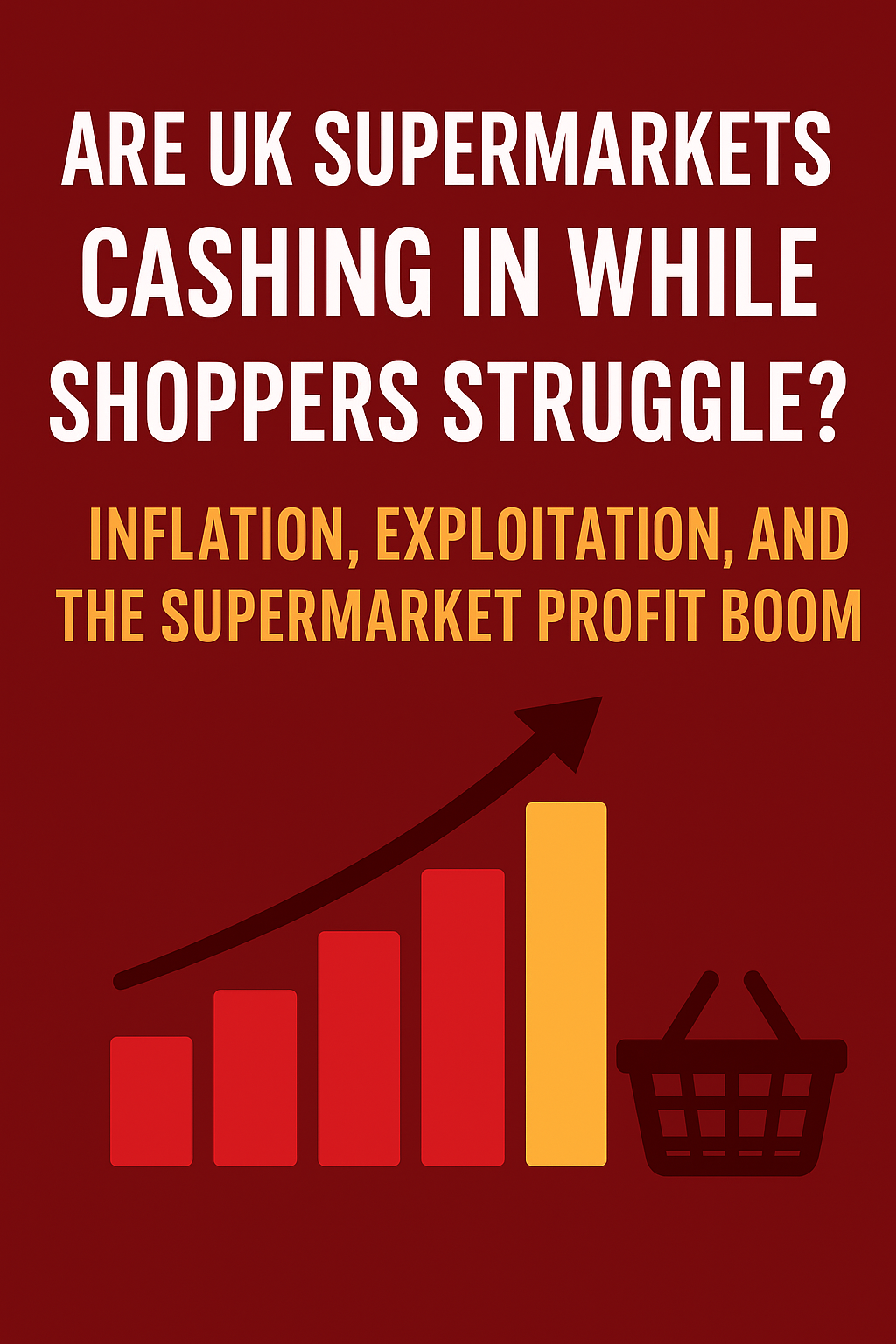How UK Grocery Giants Profited While Millions Faced Hardship
Over the past few years, the UK has experienced a dramatic rise in the cost of living, with food prices becoming one of the most painful burdens for everyday households. While general inflation reached record highs, supermarket price increases often surged well beyond official inflation rates, raising urgent questions about corporate profit and public hardship.
Food Prices vs. Inflation in the UK
The UK’s Consumer Price Index (CPI) peaked at 11.1% in October 2022, the highest level in four decades. However, food inflation hit even harder, with prices rising over 19% in the year to March 2023, according to the Office for National Statistics (ONS).
Basic essentials were hit the hardest:
- Milk increased by more than 40% in some stores.
- Cheese and eggs surged by 30%.
- Bread, pasta, and cereals all recorded double-digit increases.
While inflation has cooled since then, many of these prices remained stubbornly high throughout 2024 and into 2025, despite falling wholesale and production costs.
Supermarket Profits Soar
During the same period that UK households were tightening their belts, major supermarket chains posted strong and rising profits:
- Tesco, the UK’s largest supermarket, reported a £2.49 billion pre-tax profit for the year ending February 2023.
- Sainsbury’s posted profits of £690 million, driven in part by increased grocery sales.
- Lidl and Aldi also expanded rapidly and benefited from price-conscious consumers trading down from more premium retailers.
These profit levels have led to growing scrutiny, particularly as many consumers found themselves spending more but getting less—thanks to price hikes, shrinkflation, and skimpflation.
Greedflation: Capitalising on Crisis?
The term “greedflation” has entered public discourse, referring to the practice of raising prices beyond necessary levels under the cover of inflation. Consumer watchdogs, economists, and politicians have increasingly questioned whether supermarkets were using global inflation as an excuse to protect or even grow profit margins.
A 2024 report by the Competition and Markets Authority (CMA) acknowledged that while supply chain costs had increased, some retailers were slow to pass on falling costs to consumers. Similarly, the Resolution Foundation found that grocery profit margins had widened during the crisis, suggesting profit-taking rather than cost-covering.
Impact on UK Households
The result has been devastating for millions of families:
- The Trussell Trust delivered over 3.1 million emergency food parcels in 2023–2024—a record high.
- Citizens Advice reported a surge in food bank referrals, as more people faced choosing between heating and eating.
- A Which? survey found that over 50% of UK households cut back on food essentials in 2024, while 1 in 5 skipped meals entirely.
The poorest 10% of households were found to be spending nearly 20% of their income on food, a burden that is not only financially unsustainable but deeply damaging to public health and wellbeing.
Supermarket Defences
Supermarkets have responded with measures such as:
- Launching or expanding budget product lines.
- Offering loyalty-based discounts (e.g., Tesco Clubcard, Sainsbury’s Nectar Prices).
- Freezing prices on essential items temporarily.
However, critics argue these moves are often too little, too late, and limited in scope, particularly when contrasted with shareholder dividends and executive bonuses.
A Broken Balance
The UK’s cost-of-living crisis has revealed a stark imbalance between corporate profit and public wellbeing. While supermarkets insist they are helping customers where possible, the data paints a different picture, one of soaring profits during a period of profound consumer hardship.
In times of national difficulty, the question is no longer just about economics—it’s about ethics. Can it ever be right for major retailers to see their bottom lines grow while so many are left cold, hungry, and struggling to survive?
Discover more from The Tide Times
Subscribe to get the latest posts sent to your email.

















Leave a Reply